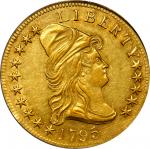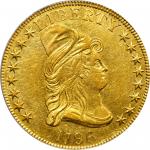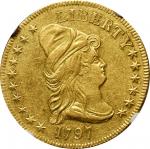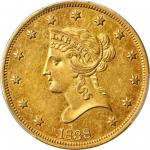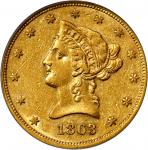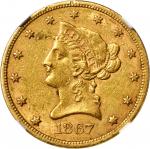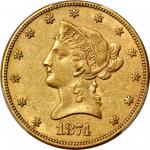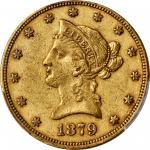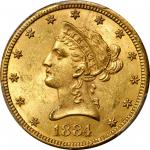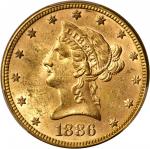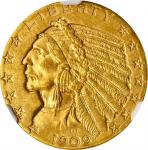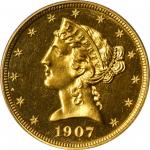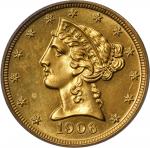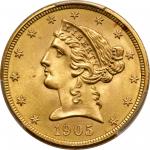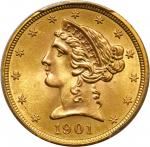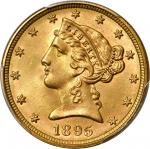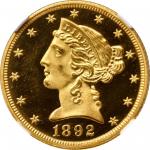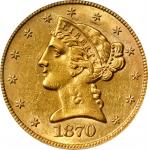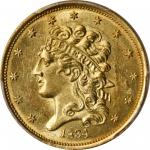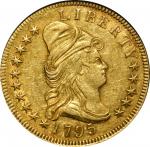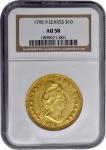1795 Capped Bust Right Eagle. BD-3, Taraszka-3. Rarity-6. 9 Leaves. AU-58 (NGC). A highly desirable and remarkably sharp example of this rare <em>Guide Book</em> variety of the 1795 eagle, the rarest and most famous of the Capped Bust Right, Small Eagle die varieties. Handsome olive-gold color greets the viewer from both sides, the surfaces also revealing subtle iridescent highlights of pinkish-rose around some of the peripheral devices as the coin dips into a light. Direct viewing angles also calls forth appreciable remnants of a prooflike finish from the fields, again mostly in the protected areas around some of the peripheral design elements. The strike is ideally centered and well executed by early U.S. Mint standards, virtually all design elements boldly to sharply rendered in the absence of all but light wear. The centers on both sides are a bit blunt, largely due to a concentration of adjustment marks (as made) in that area on the obverse. We note only light, singularly mentionable handling marks, and this is certainly a superior example of a challenging variety that would serve with distinction in even the finest early gold cabinet. BD Die State d/b.<p>This famous variety was apparently discovered by William H. Woodin, a student of the early gold series, who recognized it as a great rarity. Waldo Newcomer gave the variety his imprimatur in 1926 by buying the Woodin specimen for $100, which Walter Breen suggested "was several times the then going price for 1795s in that grade." A second specimen was not identified until 1960, when Breen cataloged one for New Netherlands 55th sale, calling it "of extreme desirability as a type coin." Interest in the variety grew with the recognition of it as a major type (the only early eagle with nine leaves on the reverse) and a major rarity, though as late as 1980 David W. Akers reported that "it has never received any publicity." Its profile is much higher in the present day. John W. Dannreuther (2006) writes that "it is one of the <em>most</em> famous die varieties among all early gold coins - the king of the Small Eagle type."<p>The rarity of this variety is no doubt explained by the failure of the reverse die, as all known examples display heavy breaks at the tip of the second leaf in the branch and looping through the first letter T in STATES. Although some numismatists have described the 9 Leaves variety as a die cutting error, the general consensus among scholars is that it represents an intentional experiment on the part of Mint personnel. Dannreuther explains:<p><em>"...the fact that the reverse was changed to 11 leaves for 1796 and 1797 indicates that [the 9 Leaves] was an intentional experiment. Perhaps the arrangement of 13 leaves was considered too crowded and grouping of 9 leaves was thought too sparse, leading to the introduction of 11 leaves on the branch in 1796."</em><p>Elusive and desirable at all levels of preservation; several of the 20 or so known examples are in low grades. This is a significant, minimally circulated About Uncirculated example of this rarity.

